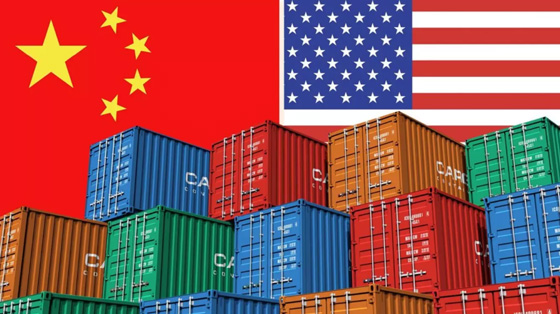According to the Trump administration, after the 2008 recession, American workers and businesses have suffered the loss of some 300,000 manufacturing jobs and the slowest economic recovery since World War II. Consequently, one of President Trump’s key issues is “bringing back jobs and growth.”[1]

To get the economy back on track, the White House plan is to create 25 million new American jobs in the next decade to restore 4 percent annual economic growth. In contrast, China’s recently introduced Five-Year Plan is predicated on rapid progress in advanced manufacturing and innovation capacity.
Curiously enough, the U.S. focus is on the kind of industrial policy that usually typifies less developed economies, whereas China is engaged in innovation strategy, which usually predominates in relatively wealthier economies. What will be the outcome?
Trump’s medium-term industrial objectives
The Trump administration is not the first one to seek the revival of U.S. manufacturing exports. “We will double our exports over the next five years, an increase that will support 2 million jobs in America,” President Obama said in his first State of the Union speech in 2010. While Obama’s National Export Initiative increased concern for protectionism and trade friction among America’s big trading partners, it gradually faded away, along with other Obama legacies.
Today, world exports amount to almost $18 trillion annually. Almost half of the total can be attributed to only eight export giants, including the European Union ($2.3 trillion), China ($2.0 trillion), the U.S. ($1.5 trillion) and Japan ($0.6 trillion), followed by South Korea, Hong Kong, Netherlands, and Italy.
In order to raise U.S. export strength by a magnitude, Trump chose Harvard-trained economist Peter Navarro to head the newly-created National Trade Council in the White House. Now Navarro’s job is to oversee industrial policy, while targeting the trade deficit is expected to pave the way to Trump’s “America First” trade protectionism.[2]
Navarro is a Republican insider who advised President George W. Bush and Mitt Romney’s failed campaign. Navarro and former Nucor CEO Dan DiMicco, another Trump trade adviser, represent not just trade protectionism but an effort to mainstream anti-China bias in America.[3] In this effort, a key executor of Trump’s mandate is billionaire Wilbur Ross, a bankruptcy expert who made his fortune from bankrupt U.S. companies and offshored jobs. He is now Secretary of Commerce.
Until recently, the new industrial policy has been initiated in relatively small scale with relatively narrow impact. If it is adopted on a broader basis, the impact could be substantial and unleash – not so much higher but slower growth, due to fewer productivity gains, but rising inflation, retaliation from trading partners and lower equity prices. There is a historical precedent. In 1930, the U.S. Congress passed the notorious Smoot-Hawley Tariff Act, which sharply raised the cost of foreign imports. While it seemed to work initially, it soon caused other nations to retaliate.[4]
China’s medium-term industrial and innovation policies
As advanced economies remain mired in stagnation while avoiding necessary changes, China is moving to broader implementation of structural reforms and toward new industries fueled by innovation-driven development.
As evidenced by the recent Two Sessions summits in Beijing, the new five-year blueprint [5] incorporates many recent technology-related initiatives, including Strategic Emerging Industries (SEI), Sci-Tech Innovation 2030, Internet Plus, and Made in China 2025.
China is now adopting priority technologies such as the “Internet of things”, “big data,” and smart manufacturing to move higher in the production value chain and several key sectors. There are some 75 priority technologies, almost 60 more than in the previous plan. Take, for instance, robotics. By year-end 2016, China was on course to triple its annual production of robots to 100,000 in five years.
In the process, the role of advanced manufacturing, modern services and strategic emerging industries as a proportion of GDP will rise significantly in China. Now a record high R&D per GDP (2.5%) has been earmarked to fund scientific and technological R&D, to build science and technology programs, first-class national science centers and technological innovation hubs, and help develop internationally competitive high-innovation enterprises.
In 2010, Chinese R&D as a share of the GDP was still relatively low (1.6%). By 2020, the figure will be higher than the EU average and at par with most advanced economies (2.5%); and close to that of the US (2.7%).
Rivalry for innovation leadership
After the devastation of Western Europe and Japan, U.S. exports dominated the world economy until reconstruction and revival in other major advanced economies. Historically, U.S. share of global manufacturing value added declined from 29% in the early 1980s to 19% in 2015. Since the burst of its asset bubble, Japan’s share of global manufacturing has plunged to a third, or about 7%. In the same period, German exports were almost halved to less than 6%, despite relative benefits from the European sovereign credit crisis.
The declining export shares of advanced economies reflect the rapid increase of manufacturing activities in the large emerging economies, especially China, which replaced the U.S. as the largest manufacturing nation in 2010.
As a result, employment in manufacturing has fallen in most major manufacturing countries but risen in many large emerging economies over the past quarter-century. Due to the emerging economies’ low-cost advantage and offshoring, which had taken off in the U.S. technology sector by the mid-80s, advanced economies tend to focus more on higher value-added, which is their comparative advantage.
As the U.S. is now opting for a very different industrial policy, the net outcome could actually contribute to longstanding relative deterioration of U.S. innovation. That, in turn, could further contribute to the longstanding relative decline of U.S. innovation in both civilian and defense industries.
As evidenced by recent research, U.S. global innovation leadership continues to falter and is in danger of flat lining.[6] While still the most innovative in the world, the U.S. defense leadership is no longer assured and is in danger of failing. Due to the fact that defense innovation in the U.S. accounts for about half of total innovation, this decline not only has an impact on defense innovation and capabilities, but also overall commercial innovation and U.S. competitiveness.[7]
Net outcomes by early 2020s?
In contrast to Obama, Trump hopes to facilitate U.S. growth with a “pro-growth tax reform,” and re-negotiated or rejected trade deals to “bring good-paying jobs to our shores and support American manufacturing, the backbone of our economy.” His hope is to unleash economic growth, and to create 25 million new jobs.
In reality, the reliance on new policy instruments (lower taxes, aggressive deregulation, new energy exports), may boost U.S. economic fortunes in the short-term but contribute to broader deterioration in the long-term (deeper income polarization, social costs of misguided deregulation, environmental hazards associated with forceful shale extraction). Sustained high-growth performance is highly unlikely to return – and the same goes for large-scale job-creation.
Paradoxically, the Trump administration seems to be trying to achieve progress in secondary priority areas, where it is destined to generate minimal or transient progress, while ignoring viable advances in those areas of competitiveness and innovation, where it could thrive.
If this proves to be true, then China may not just be positioned to reap the benefits from its accelerated secular reforms – but also from those of US policy mistakes.
References
[1] “Bring Back Jobs and Growth,” The White House. See https://www.whitehouse.gov/bringing-back-jobs-and-growth
[2] Navarro, Peter, and Ross, Wilbur Ross. 2016. “Scoring the Trump Economic Plan: Trade, Regulatory,& Energy Policy Impacts.” September 29. See https://assets.donaldjtrump.com/Trump_Economic_Plan.pdf
[3] Steinbock, D. 2013. “The Quest to Demonize China.” China-US Focus, August 19. See /finance-economy/the-quest-to-demonize-china/
[4] Rounds of tit-for-tat retaliation contributed to the Great Depression, and the way was paved for another world war. On Trump’s protectionism and Smoot-Hawley, see Steinbock, D. 2017. “Trump's protectionism has historical precedent,” China Daily, January 23. http://www.chinadaily.com.cn/opinion/2017-01/23/content_28029557.htm
[5] The 13th Five-Year Plan for Economic and Social Development of the People’s Republic of China 2016-20. NDRC. December 2016. See http://en.ndrc.gov.cn/newsrelease/201612/P020161207645765233498.pdf
[6] Steinbock, D. 2015. American Innovation Under Structural Erosion and Global Pressures. The Information Technology & Innovation Foundation. February 9. For more, see https://itif.org/publications/2015/02/09/american-innovation-under-structural-erosion-and-global-pressures
[7] Steinbock, D. 2014. Defense Innovation and the Future of American Competitiveness. Information Technology & Innovation Foundation. November 25. For more, see https://itif.org/publications/2014/11/25/defense-innovation-and-future-american-competitiveness


